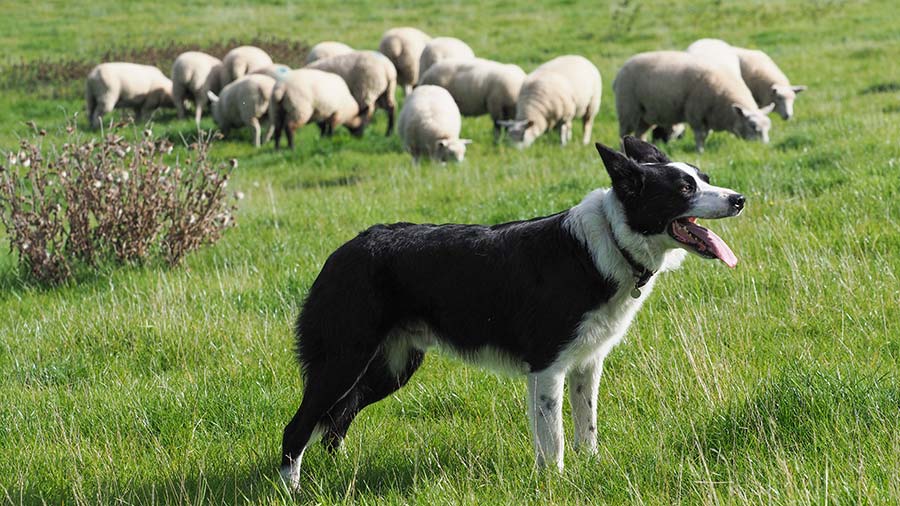Q&A: How to prevent tapeworm from damaging sheep carcasses
 © AdobeStock/Nigel Baker
© AdobeStock/Nigel Baker The tapeworm Cysticercus ovis, also known as Taenia ovis, or more commonly as sheep measles, does not tend to cause serious illness in sheep but can be a cause of carcass rejection and financial loss.
We speak to vet Hannah Kenway of Cedar Farm Vets to find out why it is a continuing issue and what can be done to control it.
See also: Hydatid disease in sheep: What it is and how to prevent it
What exactly is Cysticercus ovis?
Cysticercus ovis (C ovis) is the larvae of the canine tapeworm Taenia ovis (T ovis), which is also known as sheep measles.
The larvae form calcified cysts in hard-working muscles in the sheep, such as the heart and diaphragm.
Generally, when cysts are found at two or more sites at slaughter, this can lead to carcass rejection.
How is it spread?
T ovis lives for up to two years in the guts of dogs or wild carnivores, such as foxes. Its eggs are then shed through the dogs’ faeces into the environment and can be further spread by flies.
The eggs can survive on pasture for about three to 12 months. Grazing ewes and lambs then ingest the eggs which hatch and the larvae migrate to active muscle where cysts are formed.
These cysts are infectious for about two months. After this time, they calcify and become a lifetime blemish. If the animal is eaten by a dog during the infectious period, the cycle of infection continues.
Is there a specific risk period for infection?
As the UK doesn’t have hot, dry summers, the eggs can survive on pasture for a long time. The level of C ovis in carcasses can be seasonal as it takes two months to come through.
It’s usually picked up by sheep in the summer and is then found in older, finished lambs that have been overwintered.
How big a problem is it?
C ovis is not pathogenic for sheep and usually the infection causes no clinical signs in living sheep, unless a vital organ, such as the heart, is extensively infected, but this is very unusual.
The economic impact, however, can be considerable and it is an increasing issue.
Figures from English sheep slaughterhouses in 2015 show that C ovis was found in 57,500 sheep, causing an industry loss of over £4m.
Every client who has provided me with their abattoir return forms this year (2017) has had at least two lambs in a batch with C ovis lesions on the heart, but there haven’t been any rejections.
That suggests it is lurking. In the 2014-15 year, I had one client that had 41 out of 300 lambs rejected because of it.
If you have C ovis, you won’t be the only person, and if your neighbour had it this year, it will likely be you next year as it’s spread so easily.
It’s also an issue when selling at market because if a buyer gets high rejection levels at slaughter he can come back to the seller and ask for a payout.
The fact there is no standardised rejection policy in UK abattoirs also means it could be going under reported and some producers may be penalised more than others.
How can farmers find out if C ovis is a problem for them?
Look for any reference to C ovis on your kill sheets and share your kill sheets with your vet as they are a useful way of monitoring what is going on.
If you’ve got some presence of C ovis in the heart or anywhere in the carcass, it shows there is a problem and if conditions are right, you could get a storm of it, which could lead to rejection at slaughter.
What do farmers need to do to prevent it?
There is no treatment for it once it is in the sheep, so it’s important to prevent it by:
- Removing fallen stock quickly and preventing dogs and foxes from accessing carcasses
- Picking up faeces from farm dogs
- Ensuring dogs and foxes don’t have access to feed stores
- Placing feed in troughs instead of feeding on the ground
- Worming farm dogs every month to six weeks using a product containing praziquantel or nitroscanate
- Checking that any contractors coming on to farm land also worm their dogs
- Avoiding feeding dogs raw meat. If you do, ensure it’s frozen first or cooked
- Putting up signs on land to encourage walkers to pick up dog mess and to worm their pets
Will it be possible for the industry to get on top of the problem?
It should be controllable. If everyone is on top of it with their dead stock, it will break the cycle. It only takes one person to affect everyone.
It’s something the industry needs to be hotter on, especially as we try to develop an export market post-Brexit; we need to produce blemish-free lamb.
